New Boston, New Hampshire
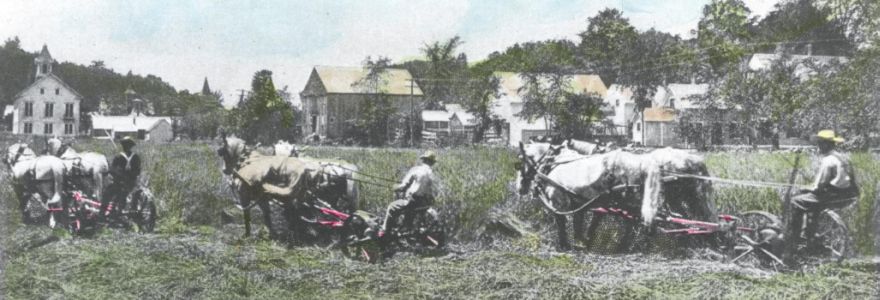
New Boston's Farms
J.R. Whipple and the Valley View Farm 1881-1912Joseph Reed Whipple grew up on a New Boston farm. He became a successful hotelier in Boston, Massachusetts, but always maintained a connection to New Boston. He supplied his Boston hotels (the Parker House, Young's Hotel and the Hotel Touraine) from his 2,500-acre New Boston farm, established in 1881. In 1893 he built the railroad line between New Boston and Parker Station in Goffstown so that he could ship produce to Boston more easily.
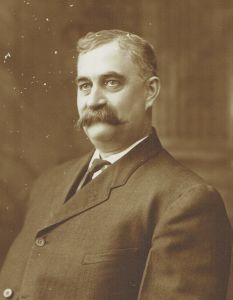
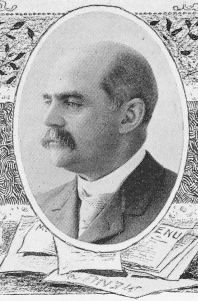
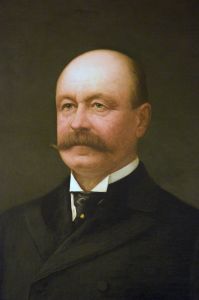
Joseph Reed Whipple in an undated photo, in an 1897 magazine, and in a painting now in the Parker House

Parker House pickle fork donated by Dick & Betsy Moody
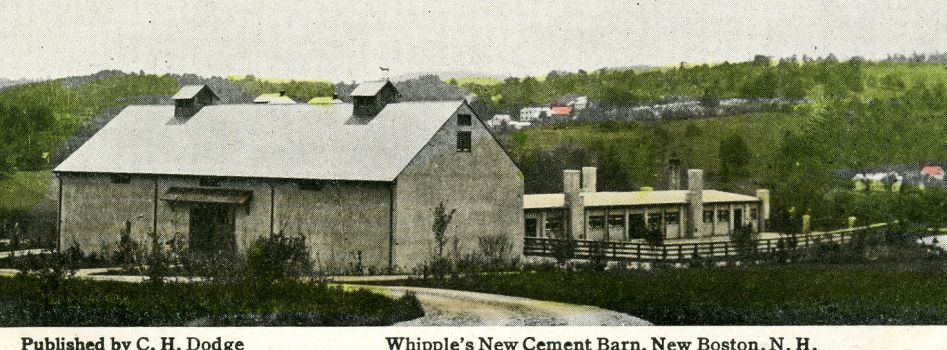
J.R. had a state-of-the-art cement barn built for his cows around 1909.
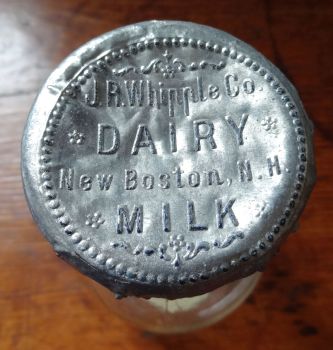
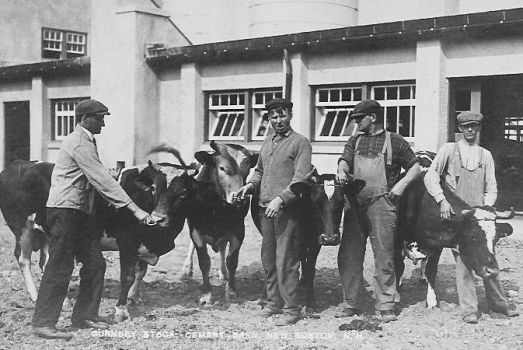


The Valley View homestead is at the junction of Routes 77 and 136, near the New Boston Dental Care and Family Medicine building.


Before tractors were in use, horses plowed and pulled wagons.
Valley View Farm had thirty horses.
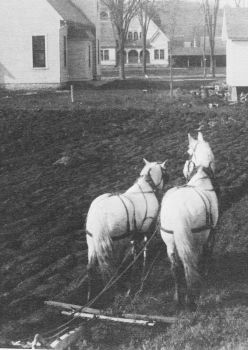
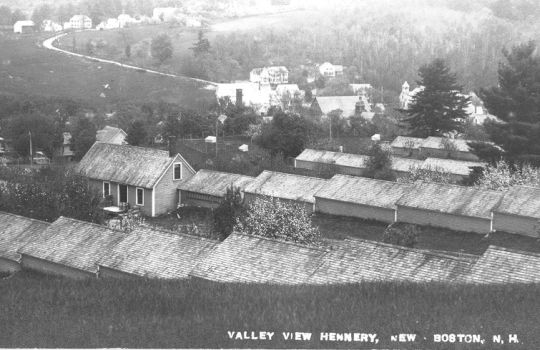
Left: A curious inscription on the reverse of the plowhorse photo is "Frank Rogers horses drowned in Mill Pond".
Right: J.R.'s Valley View Farm had a hennery with a nice view of the river valley and New Boston village.
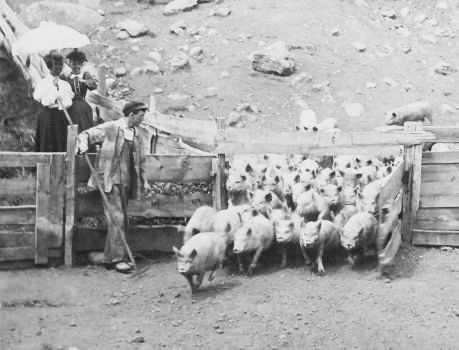
These little piggies are running to eat slops sent from J.R. Whipple's Boston hotels in barrels.

Pork chops, bacon and sausage went from the New Boston farm to hotel kitchens.
J.R. Whipple built a modern creamery to process raw milk from his dairy farm into milk, cream and butter for his hotels. At its peak, the Creamery produced 2,000 quarts of cream, 6,000 quarts of milk and 4 tons of butter per month.
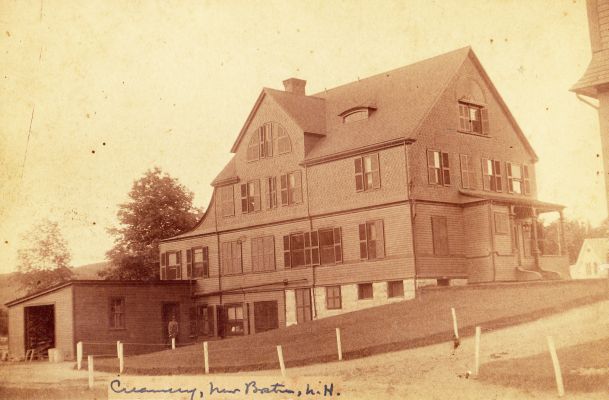
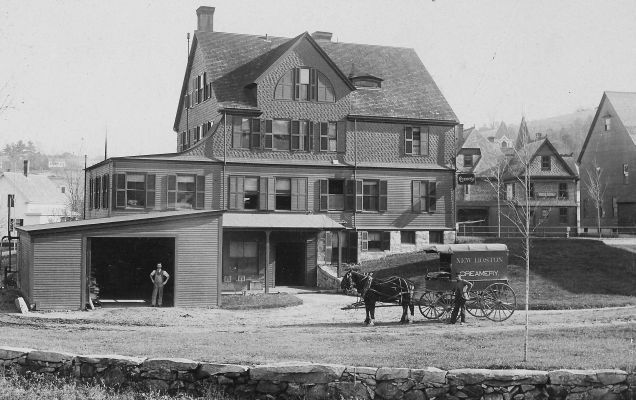
The Creamery still stands behind Dodge's Store and the Apple Barn.
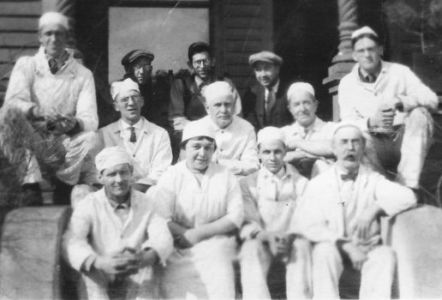
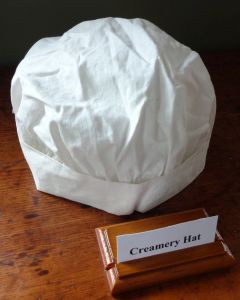
Creamery workers - 1922
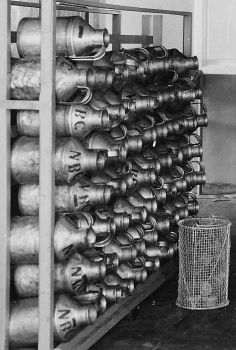
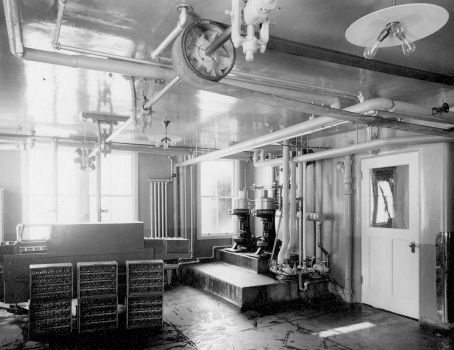
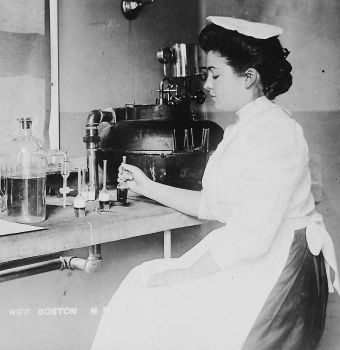
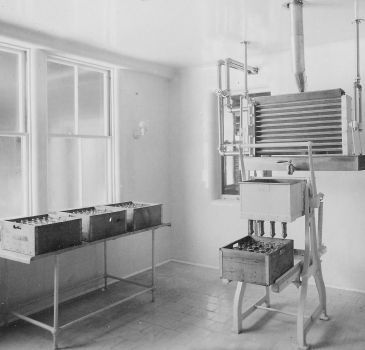
Raw milk went to a Separator Room, a Testing Room and a Bottling Room.
Milk and cream were tested for Per Cent of butter fat, and farmers were paid on this basis.
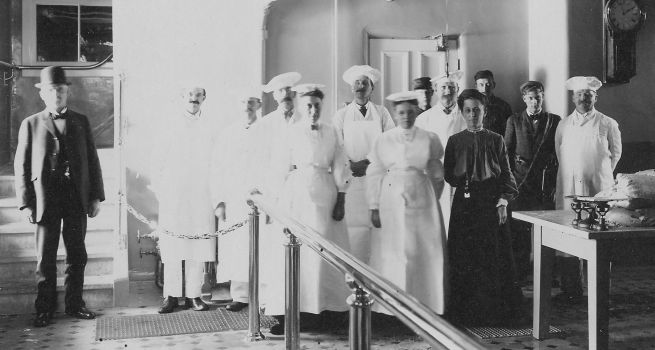
Creamery workers in the butter room
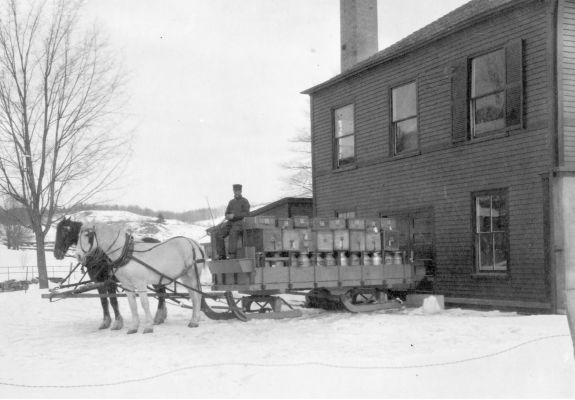
Cows were milked year round so milk had to be delivered in all seasons.
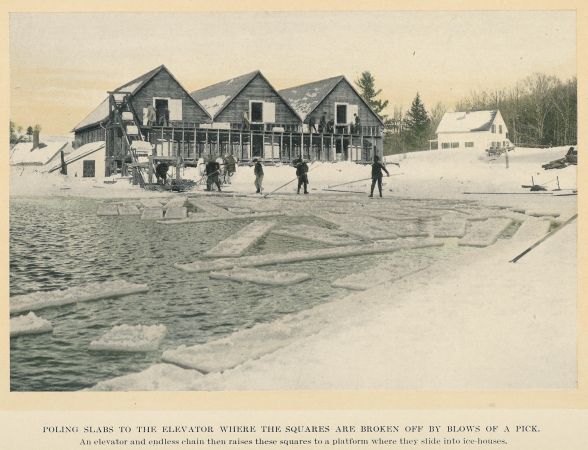
Before refrigeration, ice blocks were harvested in the winter and stored for year-round cooling.
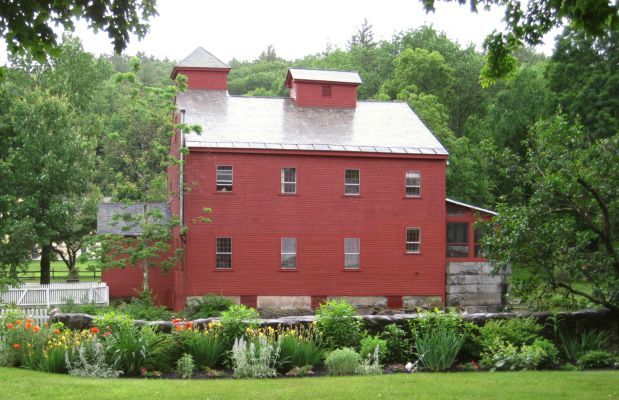
J.R. Whipple purchased this 1803 gristmill (which may be seen from the Historical Society museum) and installed a new turbine and improved stonework.
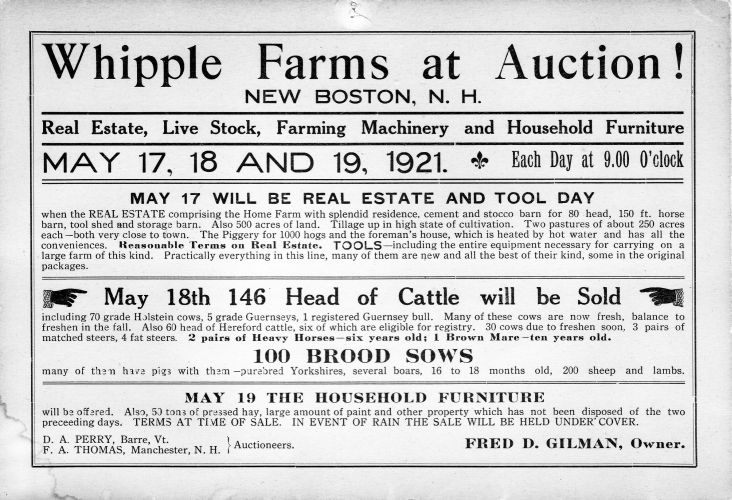
J.R. Whipple died in 1912 and his farms were auctioned in 1921.
If you would like more information about the Valley View Farm, the J.R. Whipple Company published a book about it in 1910. You may read "About the Farm" on-line or download it from this link: About The Farm (1910) The book was made available to guests at Whipple's Boston hotels to to advertise the quality and freshness of the food served in the hotel restaurants.
"About 'About the Farm'" — a 1991 interview with Oliver H. Dodge
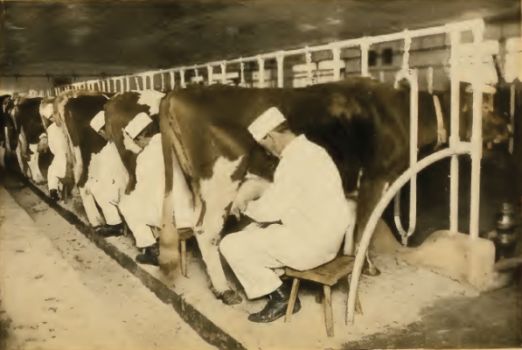
"They used to milk all by hand. At half-past three in the morning and half-past three at night, the milkers would all gather up by the horse barn and they would drive them down to milk. Each man was supposed to milk from ten to fifteen cows. Often they had an awful time in the morning getting help. Once they had 97 cows to milk and only three guys showed up. They milked as long as they could until their hands were so sore they couldn't milk any more and then Jim Igo went up to the horse barn and got the teamsters to come help. The teamsters weren't too happy about that."
"A good milker would average about 10 cows an hour. A cow would be called a 'one-can cow' or a 'two-can cow'. A can was eight quarts. A two-can cow was a helluva cow. Today some cows will give 100 pounds a day. That works out to about three cans a milking. It would take quite a while to be milking them by hand."
The farm had Guernsey cows and Holstein cows:
"Those Guernseys, they imported right over from the Isle of Guernsey. That's over near Ireland. They had 40 Guernseys on a side in the barn. Their milk was a lot less but richer [than the Holsteins]. The milking crew was totally separate for the Guernseys. The guys in the Guernsey barn were special guys. They had to be more refined than the Holstein guys. The Holstein guys were a little rough — they didn't have to put on their white suits."
On the Cement Barn:
"They had some big celebrations in the Cement Barn, the men all tell. When they dedicated it, they brought all the help up from the hotels in Boston. They set tables up the whole length of the cow barns, had waiters and a 100 foot table in the middle of the hay barn. They had a bar set up and everyone was invited. The local people had never had cocktails before. It was said that many a man didn't make it home for chores that night."
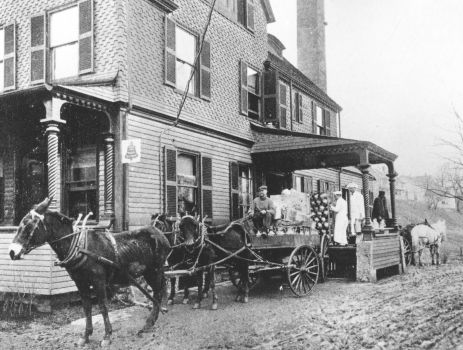
"The man in the wagon with the mules is Frank Mitchell. He was Howard Towne's grandfather. He came from Weare. He picked up milk at all the farms around South Weare and came down through with his mule team everyday. I've heard them tell that there was another team that came in from Francestown and another from around South Hill from the Reed Brothers. I've heard them tell about trying to get in to the Creamery ahead of each other because it took quite some time to unload, and whoever got in first, it would make quite a difference in the time of day that they got out.
I've heard them tell about them coming down Hogback. When they were about at Gagnon's [in 2012 this would be near Molly's Restaurant] they could look up and see Mitchell coming down High Street and they'd try to beat each other to the Creamery. They said it was mule team against horse team. And a little persuasion behind both of them."
On the train:
"There used to be two trains each day into town, one in the morning, one at night.
When the trains came back from Boston, they would bring back wooden barrels with sealed covers with garbage and pastry from the hotels. Some of the barrels contained nothing but pastry and cakes that weren't touched. The help could take what they wanted and it was said that sometimes more was consumed by the two legged pigs than the four legged ones. These barrels were then dumped out to feed the pigs."
On cutting slabs of ice from the ice ponds:
"Old Atwood Demary used to cut ice down here in our pond. They didn't have any horses. They would cut ice all out by hand. They would cut it, haul it out and help load it for 2 cents a cake. He would saw out a hundred cakes a day. He thought he was making big money."
In 2023 the Historical Society combined photos from Whipple's 1910 book "About the Farm" with the transcript of John Bunting's 1991 interview of Oliver Dodge so that you may read Oliver's comments about the photos in context. Click "About About the Farm" to read the new illustrated edition.

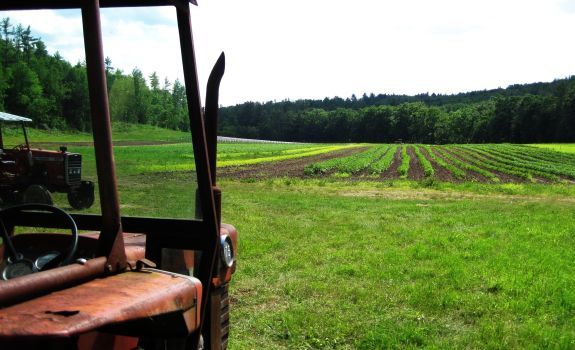
In 2012, the Middle Branch Farm CSA (Community Supported Agriculture) is one of the largest farms in New Boston.
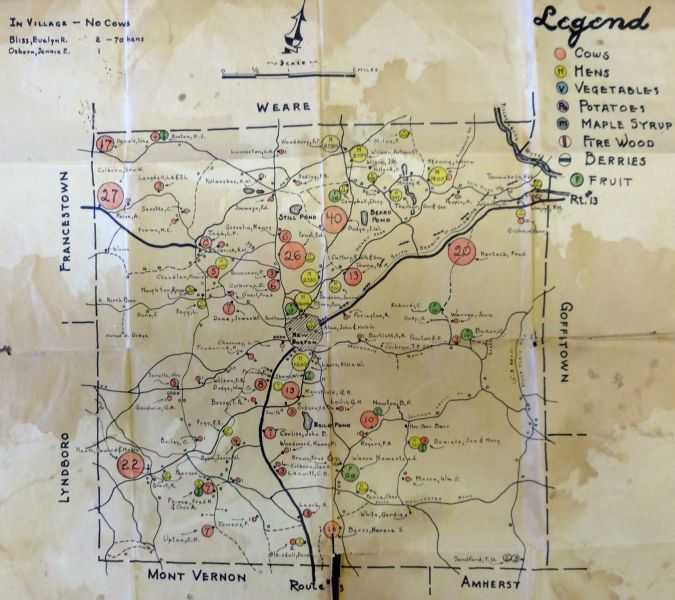
A 1938 map of New Boston's "Commercial Agricultural Production" was drawn by someone named "D.W.H." at the Department of Agricultural Economics in Durham, NH. Perhaps he or she was a student.
The map shows the relative sizes of herds of cows (orange circles) and flocks of chickens (yellow circles).
(Click on the map to see a larger image.)
